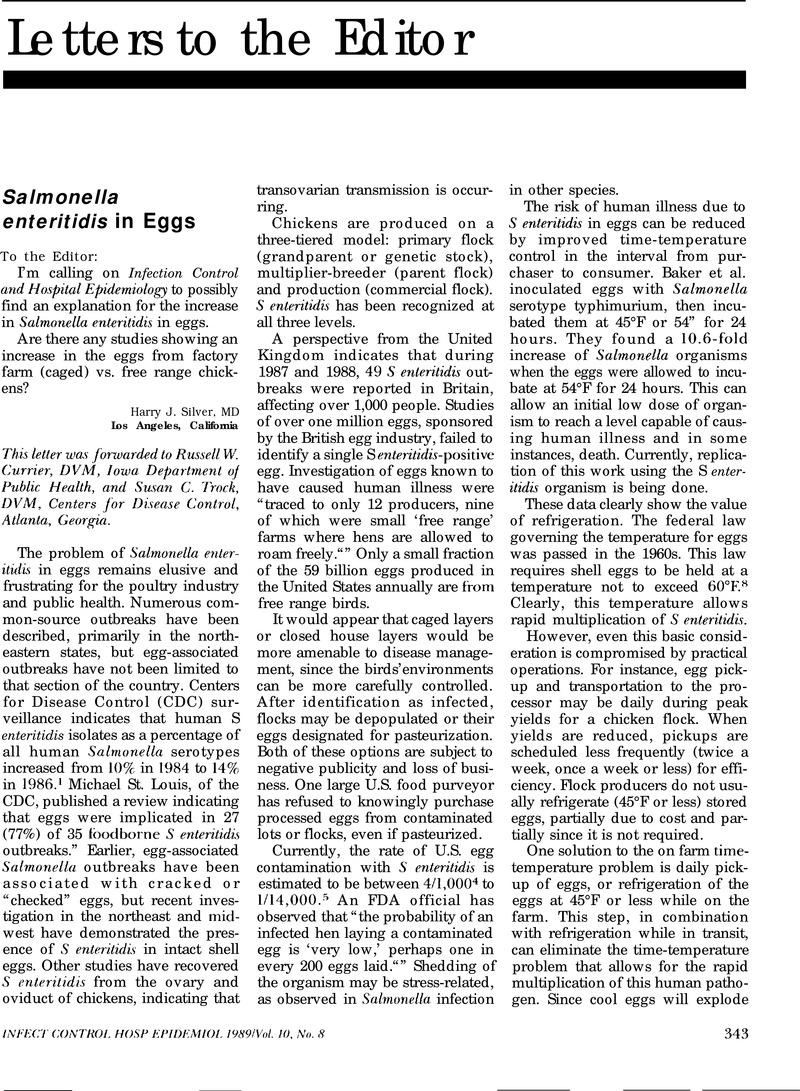No CrossRef data available.
Article contents
[no title]
Published online by Cambridge University Press: 21 June 2016
Abstract
An abstract is not available for this content so a preview has been provided. As you have access to this content, a full PDF is available via the ‘Save PDF’ action button.

- Type
- Departments
- Information
- Copyright
- Copyright © The Society for Healthcare Epidemiology of America 1989
References
1.
Hargrett-Bean, NJ, Pavia, AT, Tauxe, RV:
Salmonella isolates from humans in the United States. MMWR
1988; SS-2:25–31.Google Scholar
2.
St. Louis, ME, Morse, DL, Potter, ME, et al: The emergence of grade A eggs as a major source of Salmonella enleritidis infections. JAMA
1988; 259:2103–2107.10.1001/jama.1988.03720140023028CrossRefGoogle Scholar
4.
Incidence of Salmonella-contaminated eggs reported low. Food Chemical News
1988; 12:6–7.Google Scholar
5.
Conner, MW, Crouch, EA, Green, LC, et al: Assessment of safety of grade A shell eggs. In a risk assessment sponsored by the Egg Nutrition Center, Washington. DC, 1988.Google Scholar
7.
Baker, RC, Hogarty, S, Poon, W, et al: Survival of Salmonella typhimurium and Staphylococcus aureus in eggs cooked by different methods. Poultry Science
1983; 62:1211–1216.10.3382/ps.0621211CrossRefGoogle ScholarPubMed
8.
Code of Federal Regulations; Agriculture. Federal Register
1987; 56(Jan 1): 133–134.Google Scholar
9.
Safe handling of eggs in quantity. Food Serxnce Institutions Bulletin, Food and Drug Administration; September 1988: 1.Google Scholar


